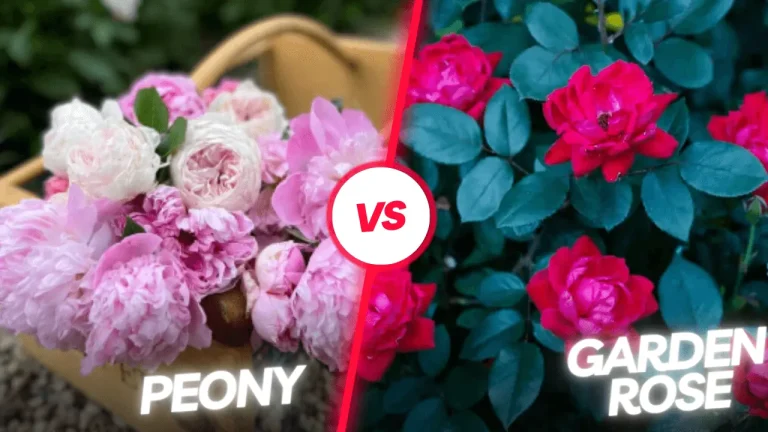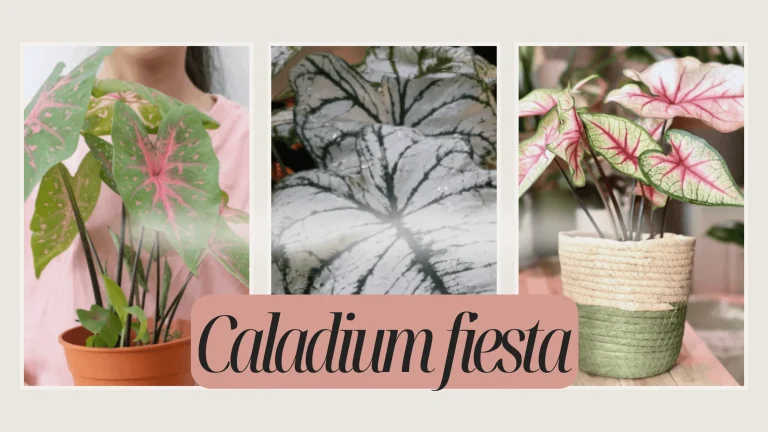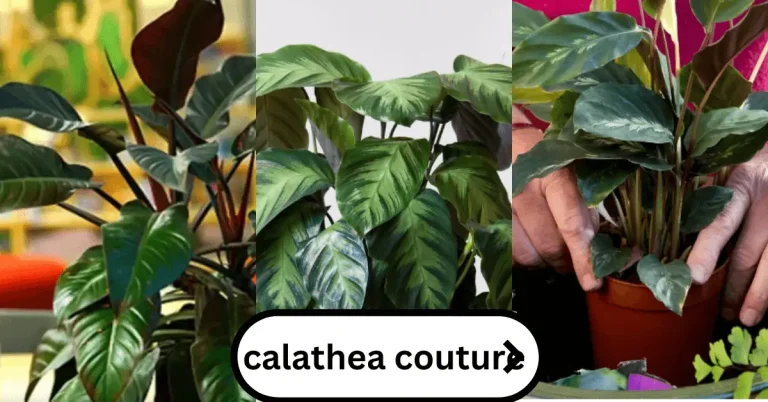Marble Queen Pothos: Must Read This Guide before buying Pothos
Marble Queen Pothos (Epipremnum aureus) is the Pathos variety’s most common and easy-to-grow house plant. Like the other variegated plant species, it is famous for variegated foliage with green and creamy patches. Like other indoor vines, they can be housed in pots or hanging baskets. They have 13 different species. They can easily adapt to the indoor environment in the 11 and 12 Hardiness zones. Loamy, moist, and well-drained soil helps them to grow up to 10 feet long. The leaves are highly diversified with a more white to creamy appearance.
They are slow-growing plants. With all these features to add aesthetic value to your home and gardens, Marble Queens is toxic to your pets. They contain Calcium Oxalate (CaC2O4), which is toxic as it causes irritation and swelling whether touched or ingested.

Before exploring its care tips and propagation methods, let’s see a table listing features and facts about the Marble Queen.
Features of Marble Queen Pothos
| Scientific Name | Epipremnum aureum |
| Common Name | Marble Queen Pothos |
| Family | Araceae |
| Native Area | Australia, Philpine |
| Plant Type | Vine, Perennial |
| Plant Size | 8-10 feet |
| Best Soil | Well-drained Loamy soil |
| Soil pH | 55.-6.5 pH |
| Bloom Time | Spring, Early Summer |
| Bloom Colour | Green, White |
| Hardiness Zone | 11 – 12 (11a, 11b, 12a, 12b) USDA |
| Varieties | 1. Snow Queen Pothos 2. Manjula Pothos 3. Golden Pothos 4. Jessenia Pothos |
How to care for Marble Queen Pothos?
I enjoy the company of these plants as they require little attention and care. I got my first plant back in 2019, and since then, I have multiplied more than 30 pots using fresh cuttings. Today, I will reveal all the tips for getting a better Marble Queen plant.
Their variegated leaves and beautification demand those who care for better bloom and leaves. Regular pruning and better aerated and eliminated space will help them to show their potential. Consider the following points before going to buy this plant for your home.
Soil
It grows well in loamy, well-aerated, acidic soil. Loamy soil helps them to anchor their roots well, and the aeration helps in proper drainage. As the plant is in the pot or basket, it needs proper drainage; otherwise, soggy plant growth will result.
You can also make your soil mixture by adding sand, organic matter, peat, charcoal, perlite, wood pieces, and bark. All these will add organic matter, improve the soil’s fertility and productivity, and provide water-holding capacity.
Water
The vine is drought tolerant and thus doesn’t require frequent irrigation. Only try to keep the topmost soil surface (2-3 inches) moist. You can feel when you need to rinse the plant by pressing the soil or soil mixture with your finger.
Light
Marble Queens love to grow in bright light. Placing them near the window in indirect light can serve the purpose. They can tolerate the absence of light but to some extent. It is believed that placing them to the right in south-ward windows would give better growth.
If the leaves of your plant are green, your plant is getting enough light. Maintain the light at the optimum level to get variegation in the leaf color. However, high exposure to light may cause browning of leaves.
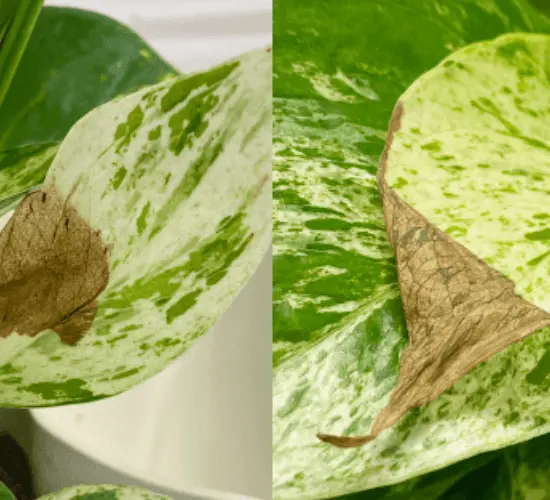
Temperature
These vines can’t tolerate temperatures lower than 55°F(14°C). Avoid exposing them to low temperatures and keep them indoors in the winter. Low temperatures beyond 50°F may cause stunted growth and drown leaves. This temperature range is optimum for hardiness in Zones 11 and 12 of USDA (United States Department of Agriculture).
Humidity
Keeping the environment humid will favor rapid growth. For this, you can keep them near the bathrooms or use humidifiers. Placing the pots on the water trays or using pebbles for extra humidity and aeration is recommended.
Fertilizer
If you have a perfect soil mixture or use organic matter or a well-decomposed material, you don’t need to consider adding nutrients and fertilizers. However, providing them with chemical fertilizer equal to the NPK ratio will help them grow faster. Moreover, adding fertilizer is recommended only during the early summer or spring.
Pruning and Trimming
This act gives them perfect shape and limits their soggy and leggy growth. For this, use a sharp cutter (scissors or shear). Cut the hanging part for the basket hanging out of the pot. These cuttings may also serve as part of the organic matter when decomposed, or you can use these as a vegetative part for propagation in a fresh state.
Use these parts and cuttings as a means of propagation.
How do you propagate marble queen pothos?
Propagation through cuttings
Healthy cuttings are the source of re-growth and propagation. Follow the following steps to learn how to Propagate Marble Queen Pothos.
- Take cuttings from the healthy plant. Cuttings should be 5-6 inches long with more than 8 leaves.
- Always try to take cuttings in early spring.
- Remove lower 3-4 leaves.
- Add this cutting into a water pot or jar with the submerged lower 3-4 inches.
- Place the jar in indirect light.
- Change the water every day.
- The cuttings will germinate after 12-15 days.
- Once the roots get 2 inches long, remove the cuttings from the water and put them in the pot with soil.
- Add water to the soil and make a hole of 3-4 inches with your finger, cutting and pressing the soil.
- Put the pot back in the light. At first, the leaves would show wilting. However, they would look fresh in 8-12 days after transplanting.
Propagation Through Air Layering?
It is possible to propagate M. Queen P. through Air Layering, too.
- Select a healthy plant 2 feet long with 5-6 nodes.
- Remove alternate leaves from the branch.
- Pull this stem and twirl it into the soil with water.
- Pin the node with a hairpin
- The pinned node will sprout roots in the soil around it

Tip
Wait 2-3 weeks and never check for roots; otherwise, you may lose your product.
How to report Marble Queen Plant?
If you want to change the pot or basket of the plant after a year or so, you need to care for the repotting; otherwise, you may lose your plant. Consider the following points.
- Apply water to the pot a day before shifting.
- Turn it sideways gently and tap the bottom of the pot. Hold the stem and loosen the soil around it.
- Scoop it and place it in the new pot with no roots exposed to the air
- Add more soil.
- Place the pot in a water bath to get excessive water, and drain the water carefully.
- Place the pot in indirect light and take care of it for 2-3 days.
Common Problems of Marble Queen Pothos
The vine gets attacked by the following diseases and pests.
Disease of Marble Queen
| Problem | Reason | Solution |
| Browning of leaves | Keeping plant in cold | Keeping plants in cold |
| Brown Tips | Dryness in the air | Use a Humidifier |
| Yellow Leaves | Under-watering and Drought | Reschedule watering plan |
| Dark spots | Bacterial Leaf Spot (a disease) | Keep leaves dry |
| Sparse-Looking / Thin Plant | Place the pot or basket in indirect light and a warmer location | Trim the plant to give it shape |
Insects and Pests
Mealybugs: Small, white, slow-moving bugs can lay more than 500 eggs on the soil or underside of the leaf.
Scales: Dark-coloured sticky insects that don’t move. They are called scales due to their appearance. They don’t move and thus only suck the cell sap.
Aphids: These insects are brown and found on the underside of the leaves.
Spider Mites: They are the most common in house plants. They are tiny and can be seen at the bottom of the leaves.
Solution: avoid over-watering, inspect the plant every day, and use well-drained soil
Compare Marble Queen Pothos with others
Marble Queen Pothos has other Pothos similar to Snow Queen Pothos, Manjula Pothos, Golden Pothos, and Jessenia Pothos. All these look similar; however, they have some differences.
Marble Queen vs Snow Queen
Their leaves are of the same shape and size but vary in color. Marble Queen has green leaves with creamy variegation and spots on them, while the Snow Queen has creamy white colored leaves with a few green spots. Green leaves help in photosynthesis, and thus, Marble Queen is healthier.
The growth of Snow Queen is slow, while that of M. Queen is high

Marble Queen vs Manjula Queen Pothos
These Pothos are very similar to each other. However, the marble leasable is heart-shaped, while those of Manjula Queens have a 3-dimensional, wavy appearance. They have spots on them as well, like the Marble’s.
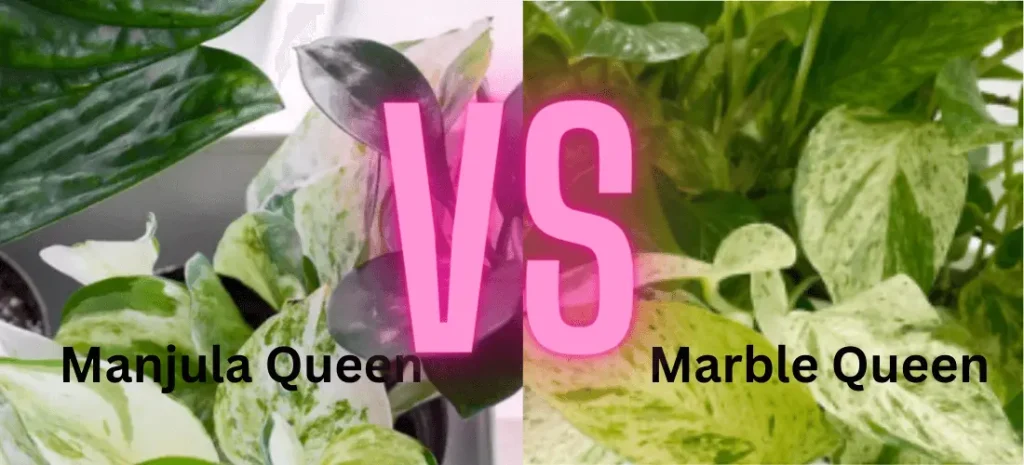
FAQs
I’m Dr Qaiser Maqsood (PhD), a dedicated researcher and expert in Biological Sciences, Gardening, Bio-Diversity, Ecology, and Environmental Sciences. I’m much concerned about Environmental Pollution, Climate Change, Plantation, Gardening, and Global Warming. My passion is to explore innovative solutions in all these fields.
Be aware that we have ONLY ONE EARTH. Protect it!!



